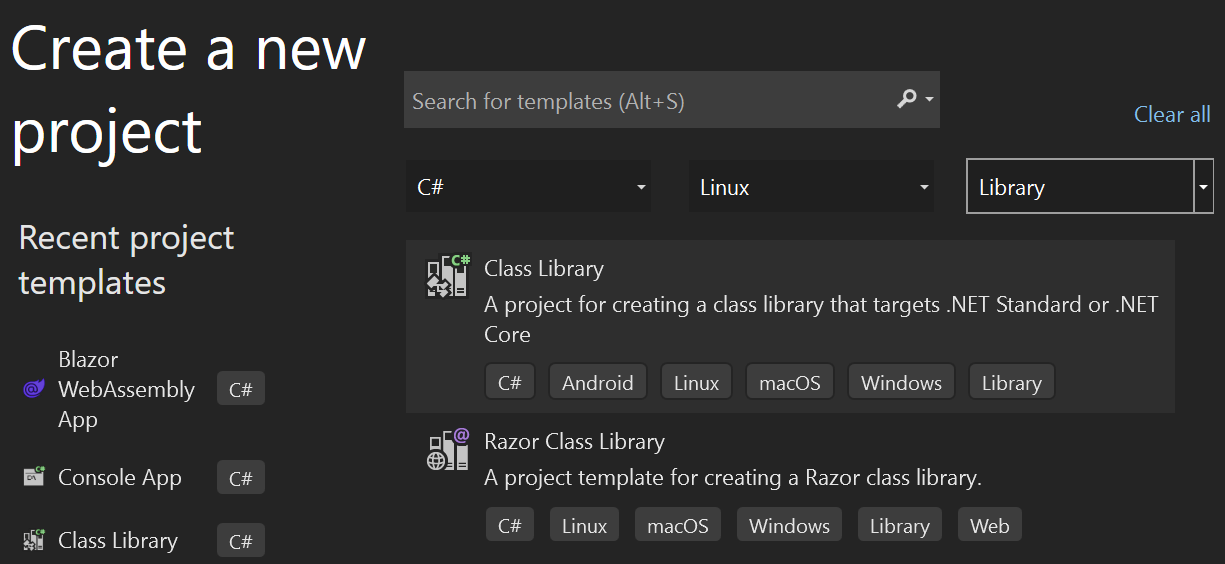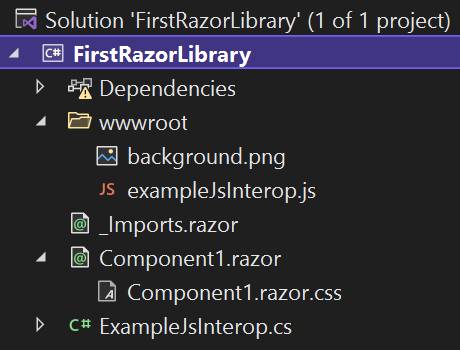Components in web applications give developers the ability to reuse portions of an application user interface throughout the application. By using Razor class libraries, developers can share and reuse these components across many applications.
In this unit, you learn how to create a Razor class library. You then use it to share rendered and static content for Blazor applications to customize and display.
Razor class libraries
A Razor class library is a .NET project type. It contains Razor components, pages, HTML, Cascading Style Sheet (CSS) files, JavaScript, images, and other static web content that a Blazor application can reference. Like other .NET class library projects, Razor class libraries can be bundled as a NuGet package and shared on NuGet package repositories such as NuGet.org.
Let’s look at the default template for creating a Razor class library.
Create a project by using the default template
You can optionally begin creating a Razor class library in Visual Studio by selecting File > New Project.

You can also create projects on a command-line interface by running the following command:
.NET CLICopy
dotnet new razorclasslib -o MyProjectName
This template delivers an initial component named Component1, which contains several important features that your components can use:
- An isolated cascading style sheet named Component1.razor.css, which is stored in the same folder as Component1.razor. The Component1.razor.css file is conditionally included in a Blazor application that references Component1.
- Static content, such as images and JavaScript files, which is available to a Blazor application at runtime and referenced within Component1. This content is delivered in a wwwroot folder that behaves in the same way as a wwwroot folder in an ASP.NET Core or Blazor application.
- .NET code, which executes functions that reside in the included JavaScript file.

Differences between a class library and a Razor class library
A class library is a common package delivery structure in .NET applications, and a Razor class library is similar in structure with a few other features configured in the project file.
XMLCopy
<Project Sdk="Microsoft.NET.Sdk.Razor">
<PropertyGroup>
<TargetFramework>net8.0</TargetFramework>
<Nullable>enable</Nullable>
<ImplicitUsings>enable</ImplicitUsings>
</PropertyGroup>
<ItemGroup>
<SupportedPlatform Include="browser" />
</ItemGroup>
<ItemGroup>
<PackageReference Include="Microsoft.AspNetCore.Components.Web" Version="8.0.0" />
</ItemGroup>
</Project>
- The project file contains an SDK reference to Microsoft.NET.Sdk.Razor to declare that it contains and creates Razor content as a Razor class library.
- The
SupportedPlatformentry declares that this library can be used in abrowserplatform, namely WebAssembly. - The
PackageReferenceto theMicrosoft.AspNetCore.Components.Weblibrary gives access to the base Blazor components that are shipped with the framework. This access lets you use those simple components to help you build more complex components.
Razor component contents
This initial Razor component is simple. It contains only an HTML div element with a short block of text:
razorCopy
<div class="my-component">
This component is defined in the <strong>FirstRazorLibrary</strong> library.
</div>ibm websphere training courses malaysia
Leave a Reply